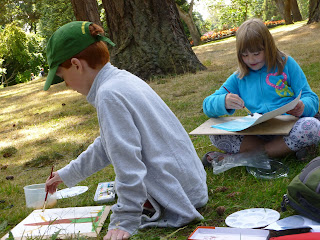 |
from the desk of
Genevieve Weber
Archivist
Collections, Research
and Access Services
Royal BC Museum |
People often ask me what my favourite part of my job is. The answer is easy: looking through the records. I review new acquisitions, decide whether they fit with our mandate, and write proposals recommending whether we should add them to our collections or send them on to a more appropriate repository. So, a big part of my job is looking through records – before anyone else! Even better!
The BC Archives collects records relating to the political, business, and social history of British Columbia. Often people and companies want to donate their records to the Archives, but before we accept them there are a number of things to consider. For example, do we already have related records? Were the records created in the province? Was the creator from the province or did s/he spend a significant amount of time here? Do the records provide evidence of activities, people, and life in the province?
As I research the records to determine these things, I often find interesting extras tucked in amongst the documents. The archives generally accepts paper, photographic, audio-visual, cartographic and electronic records, but often other types of objects are included in an acquisition. When this happens, I have a choice to make: the archives can keep the object and consider it a record; the object can be offered to another part of the museum, such as the Human History department and transferred accordingly; or it can be returned to the donor if it is considered to be irrelevant to the rest of the records. In the past few months we have found some fascinating items:
- - Driftwood painted with the image of a seagull (kept with the records of the B.C. Indian Arts and Welfare Society fonds)
- A sad iron from the 19th century (to be returned to the donor as the provenance is unknown and it is unrelated to the records)
- - A lock of hair (re-housed and kept with the records – as it was with a letter it is considered to be a part of the correspondence)
- - Pince-nez (armless eyeglasses) belonging to a former BC Premier (transferred to Human History)
- - A 19th century cash box, used to store the diaries of a former BC Premier (transferred to Human History)
 |
Example of a 19th century
sad iron |
 |
Cash box containing:
diaries and pince-nez case
RBCM 2011.156 |
Sometimes I determine that the records would be better suited to another institution. The BC Archives communicates with museums and archives throughout the province and the country to ensure that records are being stored in the most suitable place possible. This spring we were offered a group of records that I determined would better fit the mandate of the
Japanese Canadian National Museum in Burnaby. The records, although created in BC, were related to a federal activity and therefore would be more suitable in a national institution. The donor agreed, and the JCNM was thrilled to be the recipient of the donation. Likewise, a colleague recently called me from Arizona to offer us some records that had been created in BC and which he felt were completely out of his repository’s scope but may fit in ours.
Once I have determined that the records are related to BC and fit our mandate, I write a proposal to the Collections Committee, which has to approve each new acquisition before it can be added to the collection. The proposal is jointly written by an archivist and a conservator. For each item or group of records offered to the Archives, a conservator must ascertain the state of the records. As the majority of records are paper, the main concerns are mold, bleeding ink, rust from staples or paperclips, disintegrations, etc. However, there may also be a concern about “red rot”, something that happens to leather book covers, or photographic emulsion peeling back from the images. Audio-visual records have their own set of conservation issues.
 |
Archival Conservator Betty Walsh
examining a registry that is part of
a new acquisition |
Recently acquired records vary in scope: registers of mining company shareholders; personal photograph albums created by a Victoria teacher and administrator; the private records of politicians from the last two centuries; sketch books with images by a magazine illustrator; corporate records of BC companies and organizations; and commercial photographs taken of events and places around the province. With so many intriguing records to examine I am constantly setting myself strict timelines – otherwise I would be at risk of spending all my time reading old letters and looking at pictures but never getting any work done!
Do you like to look through old stuff? I would love to hear your stories about interesting things you have found – perhaps in a relative’s home or even your own attic!



























